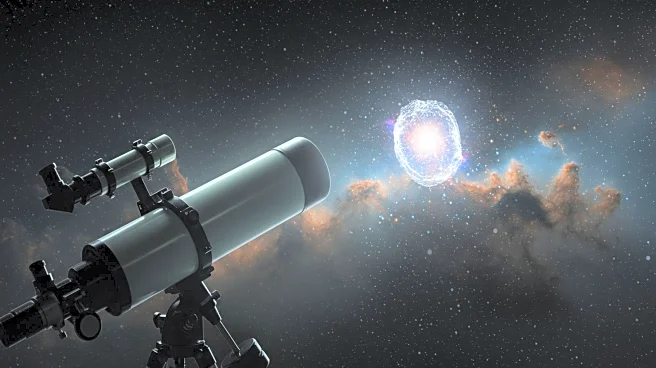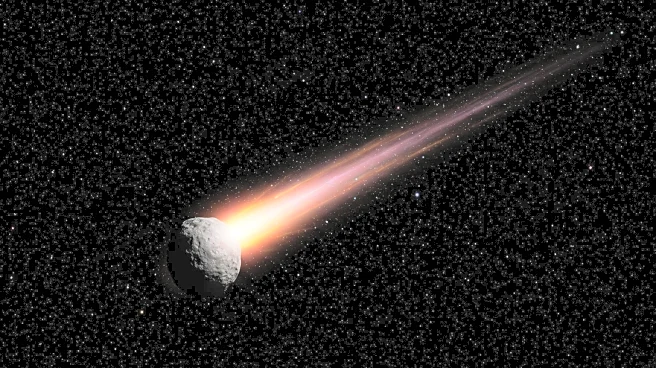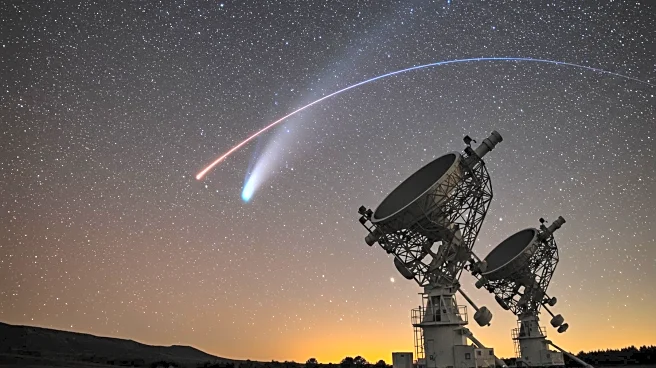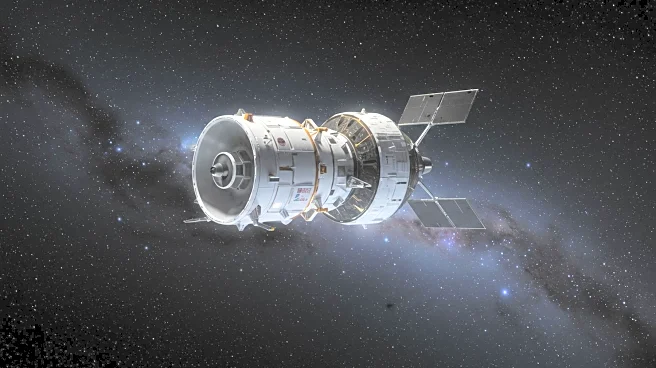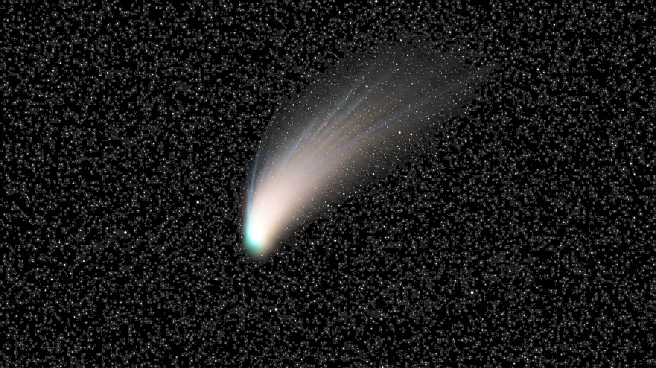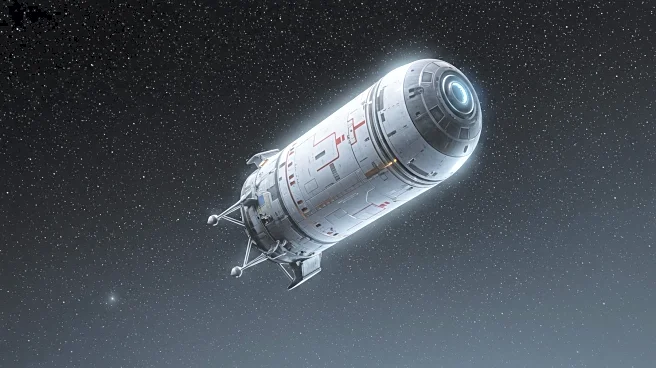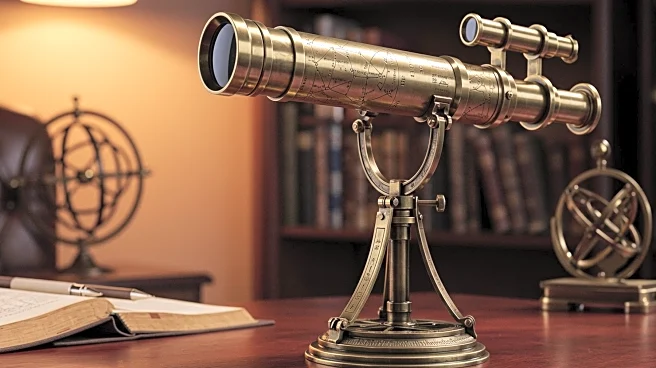What's Happening?
Avi Loeb, head of the Galileo Project and director at the Harvard-Smithsonian Center for Astrophysics, is examining the interstellar object 3I/ATLAS, which was observed by the Hubble Space Telescope on July 21, 2025. The object displays a glow ahead of its motion towards the Sun, lacking the typical cometary tail. Loeb and his colleague Eric Keto propose that the steep brightness profile observed is due to illumination by a central source rather than sunlight reflection. This hypothesis suggests that 3I/ATLAS might be much smaller than previously thought, potentially comparable in size to other interstellar objects like 1I/`Oumuamua or 2I/Borisov. Loeb's calculations indicate that a primordial black hole or a natural nuclear source is unlikely to account for the observed luminosity, leaving open the possibility of a technological origin.
Why It's Important?
The investigation into 3I/ATLAS's light emission is significant as it challenges existing models of interstellar objects and their interactions with solar radiation. Understanding whether 3I/ATLAS generates its own light could have implications for astrophysics, potentially indicating new types of celestial phenomena or even technological artifacts. This research could influence future studies on interstellar objects and their properties, impacting theories about the composition and behavior of such objects in space. The findings may also contribute to discussions on the possibility of extraterrestrial technology, a topic of interest in scientific and public domains.
What's Next?
3I/ATLAS is expected to pass close to Mars on October 3, 2025, providing an opportunity for further observation using the HiRISE camera on the Mars Reconnaissance Orbiter. Loeb has encouraged the HiRISE team to gather new data during this period, which could offer more insights into the object's nature. Observations from Earth will be challenging due to the object's proximity to the Sun in the sky. Continued data collection will be crucial in determining whether 3I/ATLAS is a natural or technological entity.
Beyond the Headlines
The study of 3I/ATLAS raises questions about the nature of interstellar objects and their potential origins. If the object is found to have a technological origin, it could redefine our understanding of space exploration and the presence of intelligent life beyond Earth. Ethical considerations regarding the search for extraterrestrial technology and its implications for humanity may also arise, influencing scientific priorities and public interest in space research.
